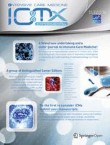Systemic and renal hemodynamic effects of intra-arterial radiocontrast
Decreased renal blood flow (RBF) and vasoconstriction are considered major mechanisms of contrast-induced acute kidney injury (CIAKI). To understand the severity and duration of such putative effects, we measu...
